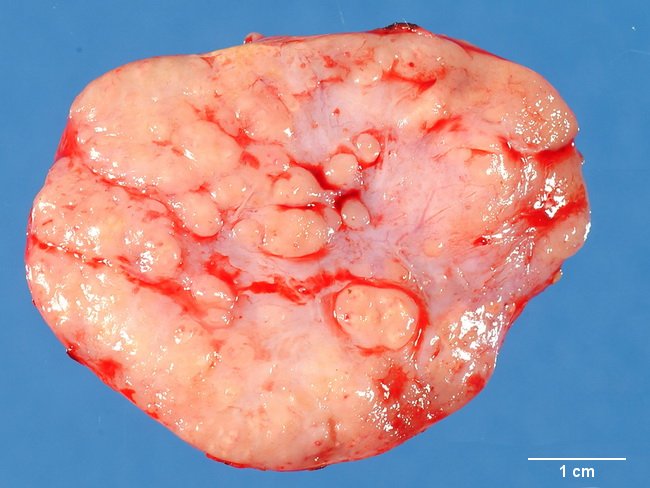Hodgkin Lymphoma : Introduction


Comments:
Introduction: Classic Hodgkin lymphoma (cHL) is a malignant neoplasm of germinal center or post-germinal center B-cell origin that occurs primarily in young adults, and less frequently, in older individuals. It usually presents as slowly progressive, painless enlargement of one or more supradiaphragmatic lymph node groups (cervical, axillary, mediastinal). Microscopically, cHL lacks monomorphic appearance seen in most other non-Hodgkin lymphomas. The neoplastic cells (Reed-Sternberg cells and variants) make up only about 1% of all the cells in the lesion. They are present in a unique tumor microenvironment consisting of various non-cancerous immune and stromal cells that make up bulk of the tumor. The diagnosis of cHL requires large neoplastic RS cells with characteristic immunophenotype as follows : CD30+, CD15+, CD45-, and variable expression of lineage-specific lymphoid markers. About this image: Classic Hodgkin lymphoma, nodular sclerosis type showing multiple nodules separated by collagenous bands. The lymph node measured almost 6 cm in size. Image courtesy of Dr. Jean-Christophe Fournet, Paris, France; humpath.com; Used with permission


